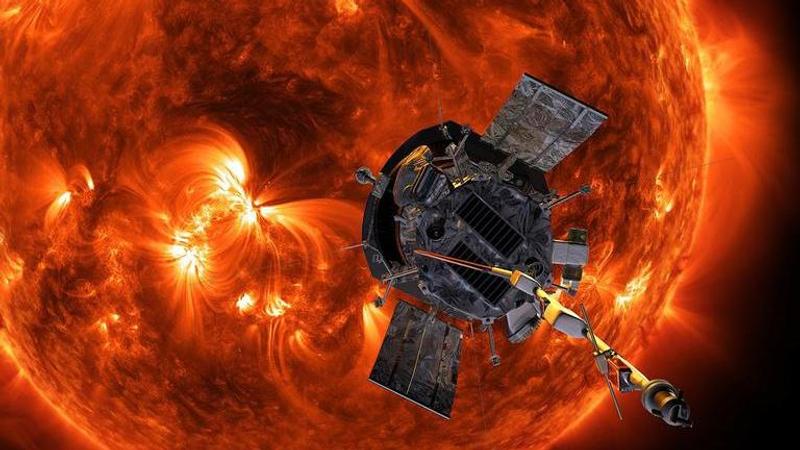Published 18:32 IST, November 10th 2021
NASA's Parker solar probe encounters heavy bombardment of dust as it inches closer to sun
The Parker solar probe, an over-the-top spacecraft launched by NASA three years ago, is being heavily bombarded by dust out in the universe.

The Parker solar probe, an over-the-top spacecraft launched by NASA three years ago, is being heavily bombarded by dust out in the universe, according to Gizmodo. Currently orbiting the sun in order to study it, the latest reports about the spacecraft’s health have emerged as a matter of surprise for scientists. The probe was sent into space in August 2018 as NASA aimed to “touch the sun” and unfold mysteries that the star hides under its brightness.
It has been three full years since the Parker probe is bearing the hostile outer space environment, which has turned worse owing to its growing proximity to the sun. Scientists have planned 24 stellar orbits of the probe and with the completion of one revolution in each orbit, it is inching closer to the sun. As of now, Parker has completed nine of the orbits and will eventually get swallowed by the sun in the next four years. The probe was named after astrophysicist Eugene Parker and is part of NASA’s Living with a Star program to explore aspects of the Sun-Earth system that directly affect life and society. Earlier in April this year, Parker Solar Probe broke its own records for solar proximity and speed, as it came around 10.4 million kilometres close to the Sun’s surface while moving faster than 532,000 kilometres per hour.
Parker probe gets bombarded by space dust
The hostility towards the spacecraft, due to the bombardment of space dust is increasing, although scientists doubt that it would jeopardise the mission before the probe meets its end. According to Gizmodo's report, the probe's collision with space dust is causing plasma explosions and debris clouds, and these situations have started impacting Parker's functioning. Scientists are now surprised as they had not anticipated the extent of damage interplanetary dust can cause and were also unaware of Parker's toughness. David Malaspina, a research scientist from the Laboratory for Atmospheric and Space Physics at the University of Colorado told Gizmodo:
These observations are ‘happy surprises’ in that the impact explosions produce clouds of material so dense that we can watch fundamental solar wind physics operate in a way that would not be possible otherwise. They are also ‘happy surprises’ in that the impacts so far have not been large enough to overcome the dust impact shielding designed into much of the Parker Solar Probe spacecraft.
As per the Gizmodo report, Malaspina further said that NASA itself asked for an investigation about the collision impacts Parker is enduring. Investigations revealed that the dust particles are no bigger than 2-20 microns in diameter but are striking the spacecraft at speeds of over 11,000 kilometres per hour. Equipped with a 4.5-inch-thick carbon-composite heat shield, Parker is built to endure temperatures up to 1,377 degrees celsius. Scientists have found that an energetic particle instrument of the spacecraft has started degrading and a hole has also been made owing to the bombardment. However, Malaspina said that he is not concerned about the probe's performance as its real test will be in its final three orbits when it will be 6.12 million km close to the Sun’s surface.
Image: NASA
Updated 18:32 IST, November 10th 2021



